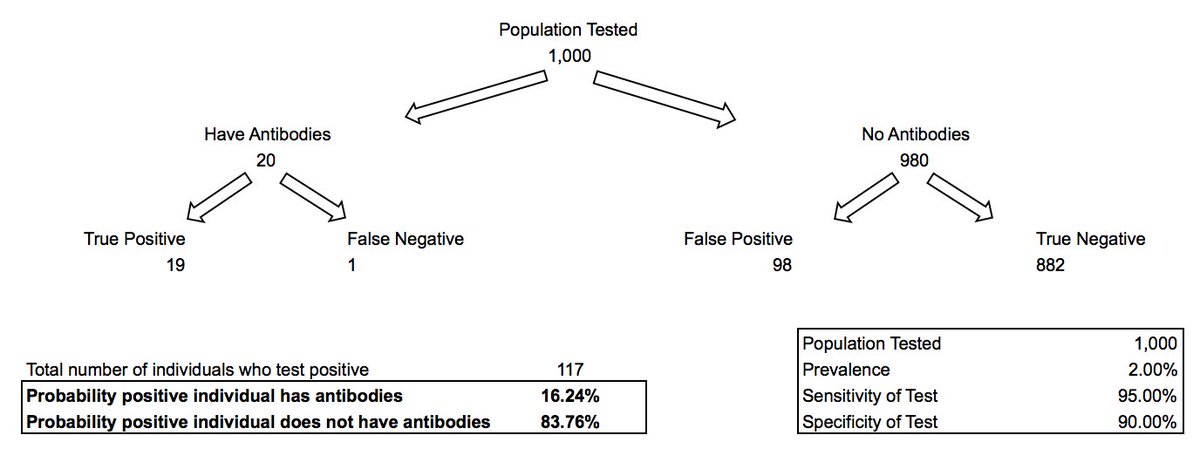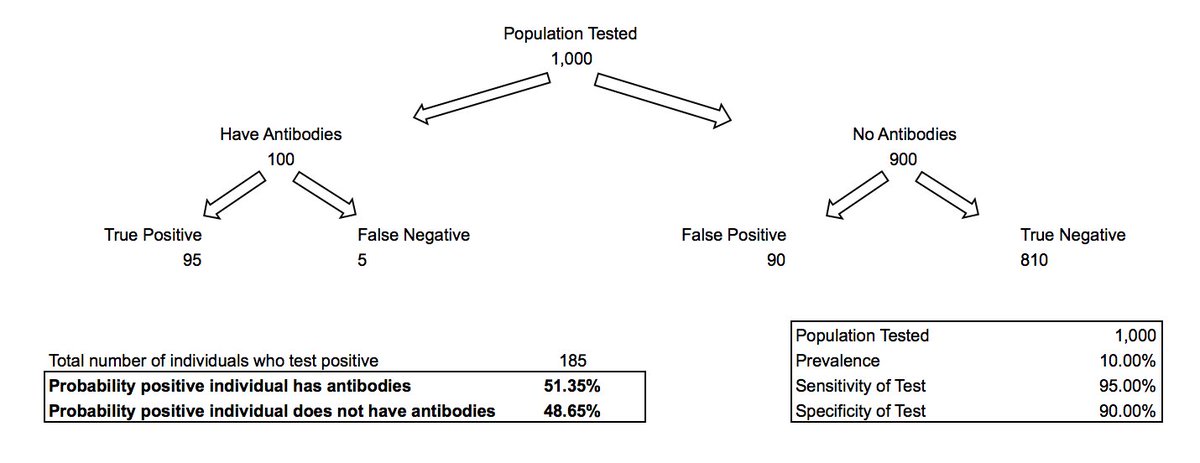A small thread on the basic mathematics of diagnostic testing. Loosening social distancing guidelines and reopening cities/nations with the #COVID19 antibody test that we currently have may put healthy, susceptible individuals at risk. (1/6)
For the sake of simplicity, we will assume that antibodies grant an individual durable, long-term protection (a large assumption given this has yet to be demonstrated in many human #coronaviruses including #SARSCOV2). (2/6)
Despite high sensitivity and specificity, the positive-predictive value of the #COVID19 antibody test is limited due to the low prevalence of the disease. A somewhat bizarre mathematical result is that the diagnostic accuracy of a test is affected by the disease prevalence. (3/6)
Assume we are testing a population for #SARSCOV2 antibodies using a test with 95% sensitivity and 90% specificity. In this population, #COVID19 has affected 2% of individuals and all of them have developed protective immunity in the form of measurable antibodies. (4/6)
What is the probability that an individual who tests positive in fact has protective antibodies? Approximately 16%. However, if the prevalence increases to 10%, an individual who tests positive has a ~50% chance of having antibodies. Prevalence dictates accuracy. (5/6)
The link below is a spreadsheet where you can manipulate the population tested, prevalence, sensitivity, and specificity of a test to determine positive-predictive value. Enjoy! (6/6) #gid=0">https://docs.google.com/spreadsheets/d/11m5T0SDXJs1xMtfB-F-_ENOxxEK5fFPplEc7WRwCHyA/edit #gid=0">https://docs.google.com/spreadshe...

 Read on Twitter
Read on Twitter



